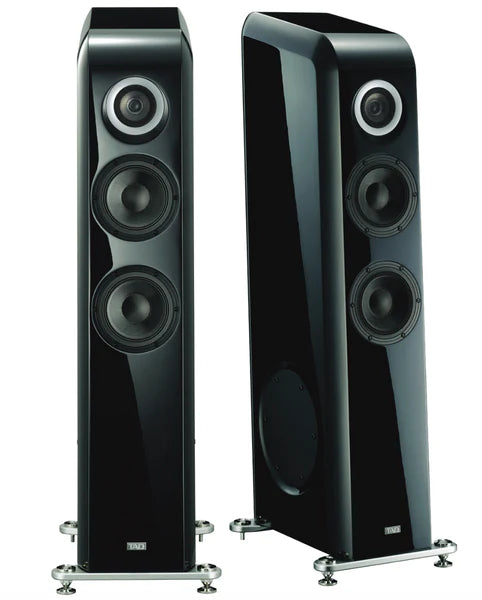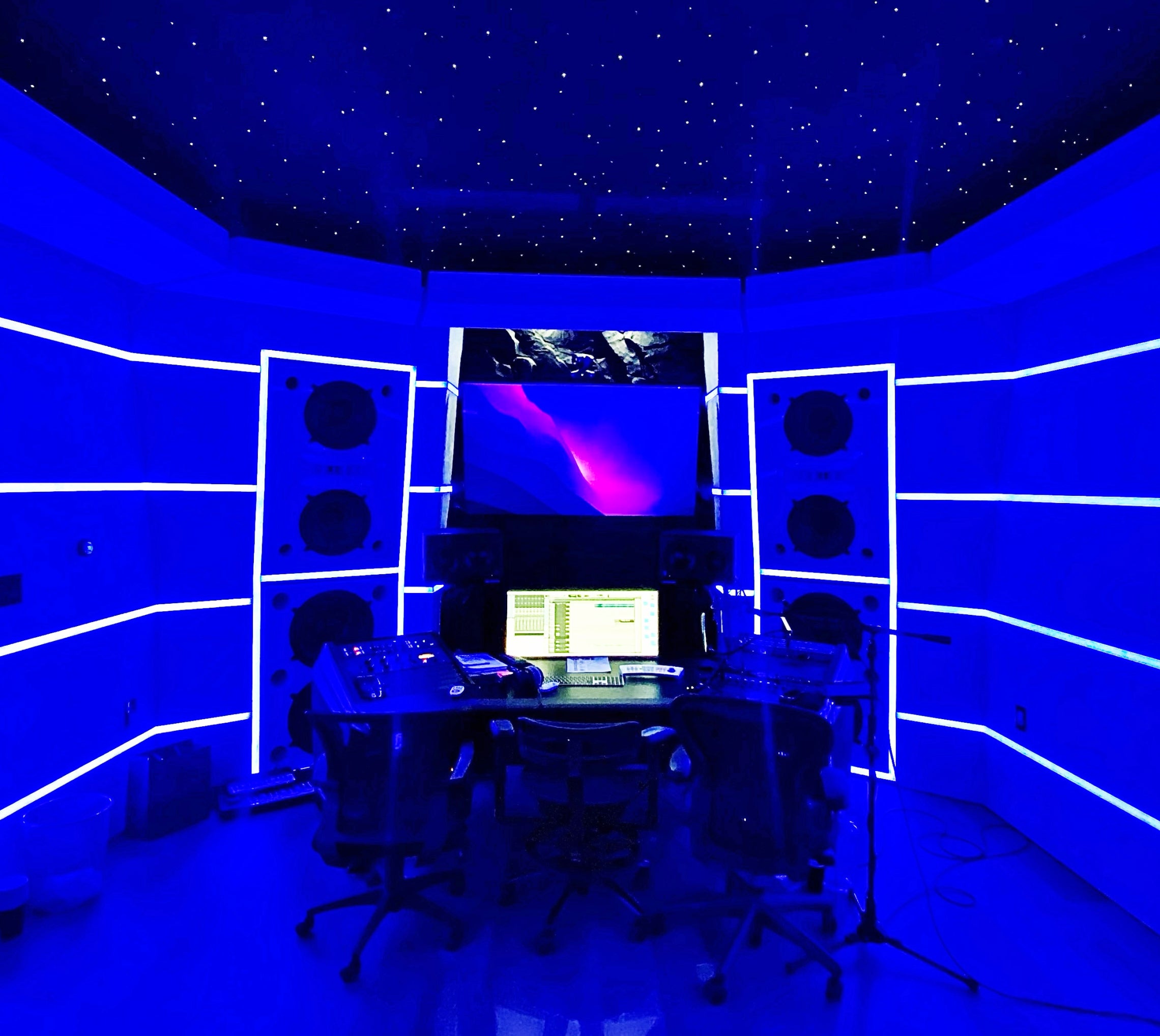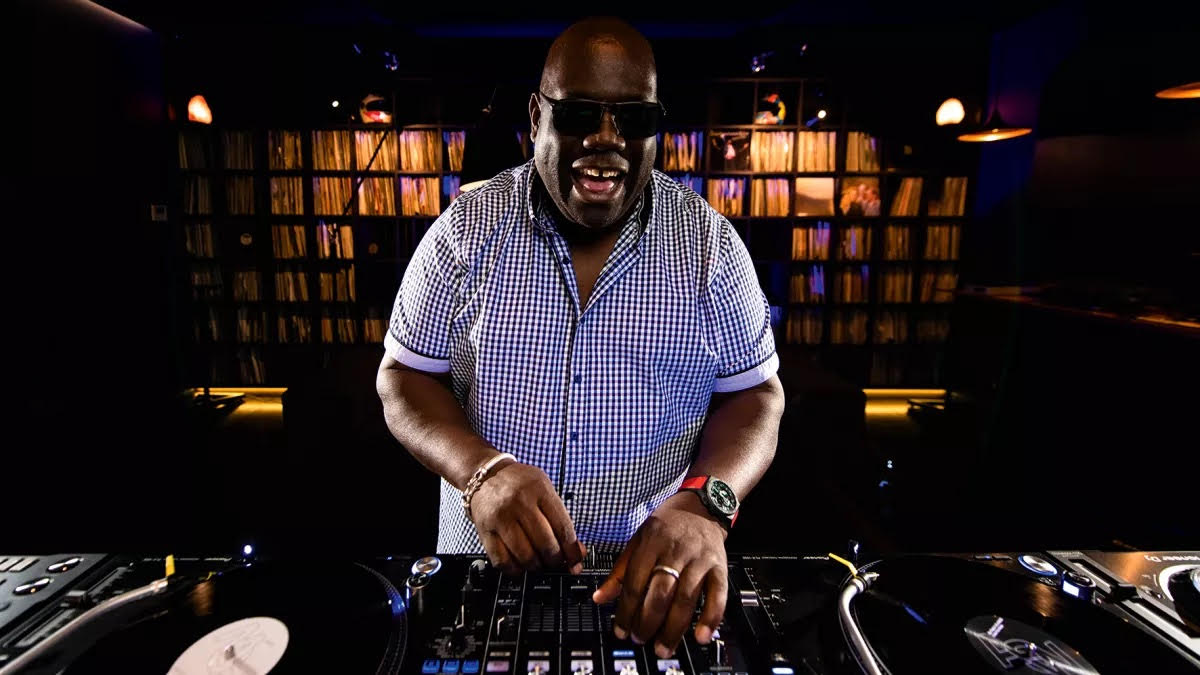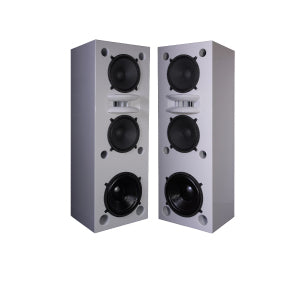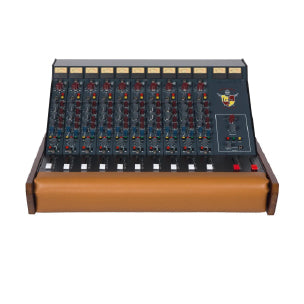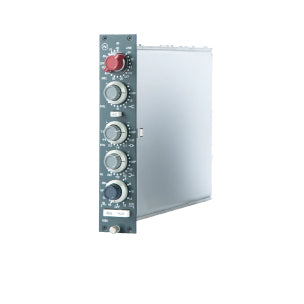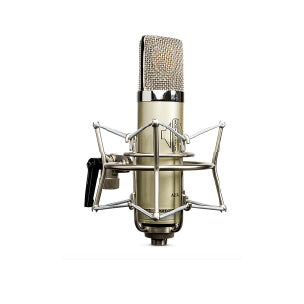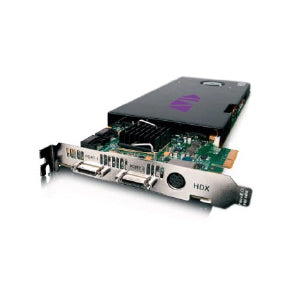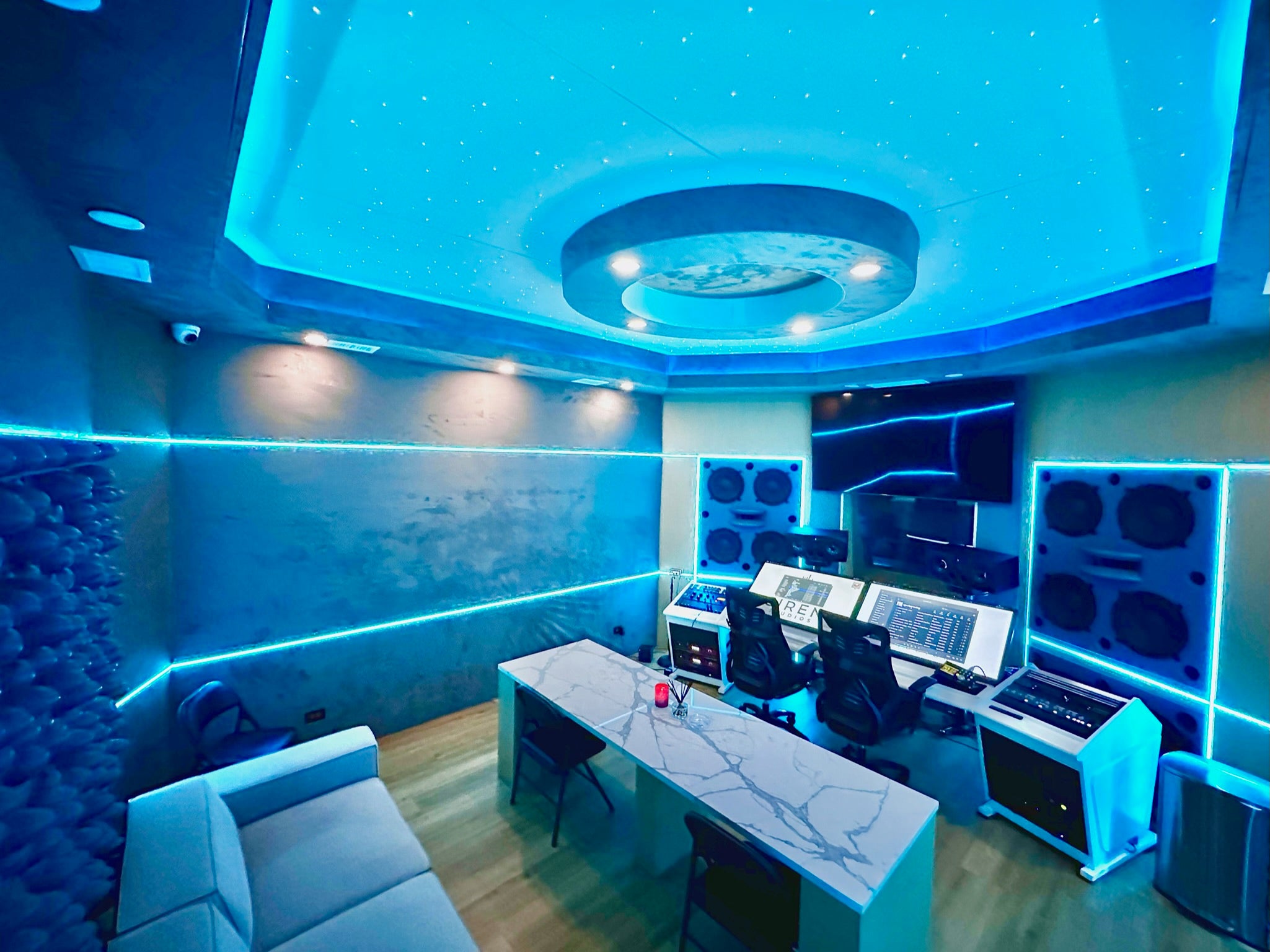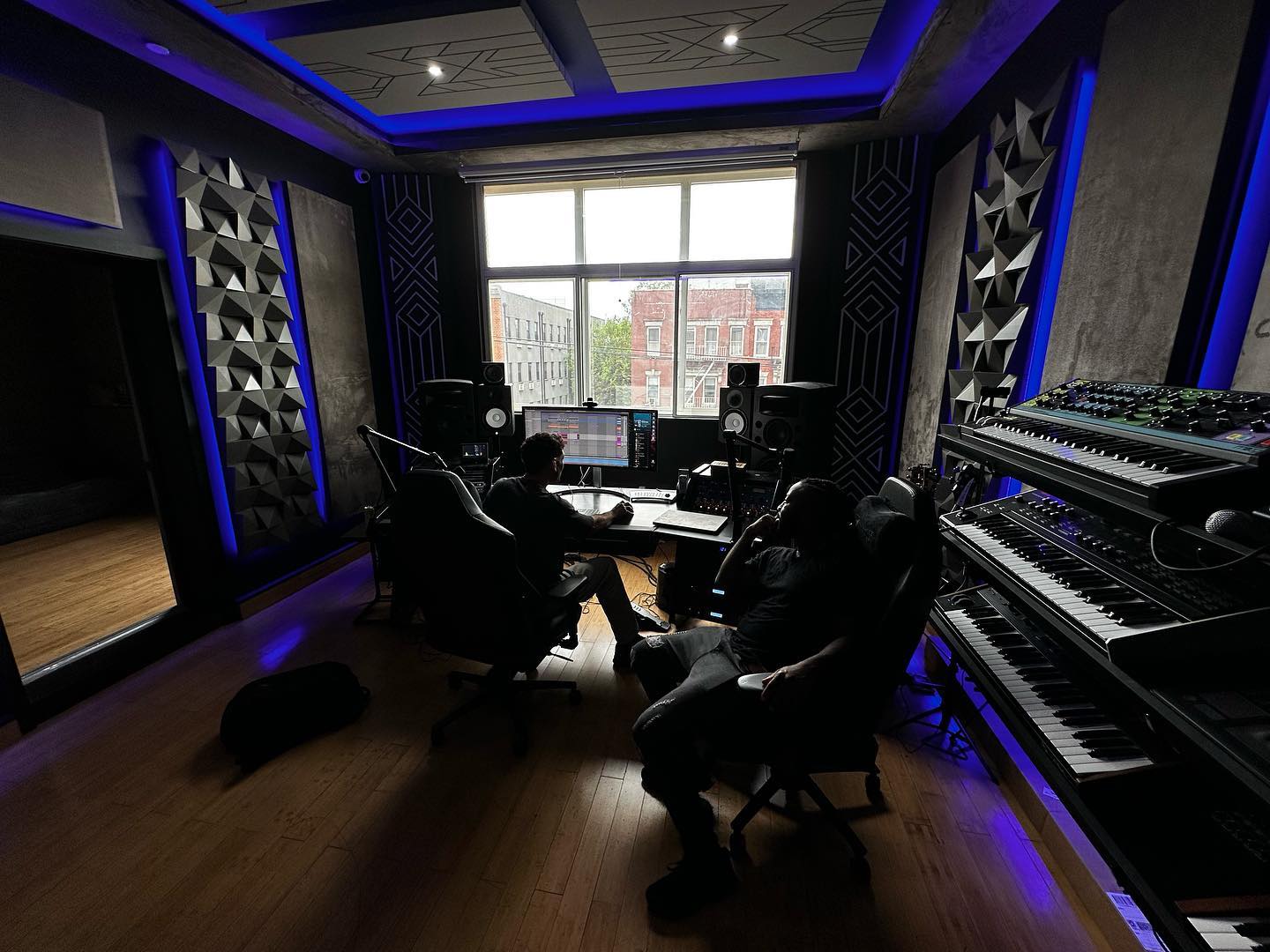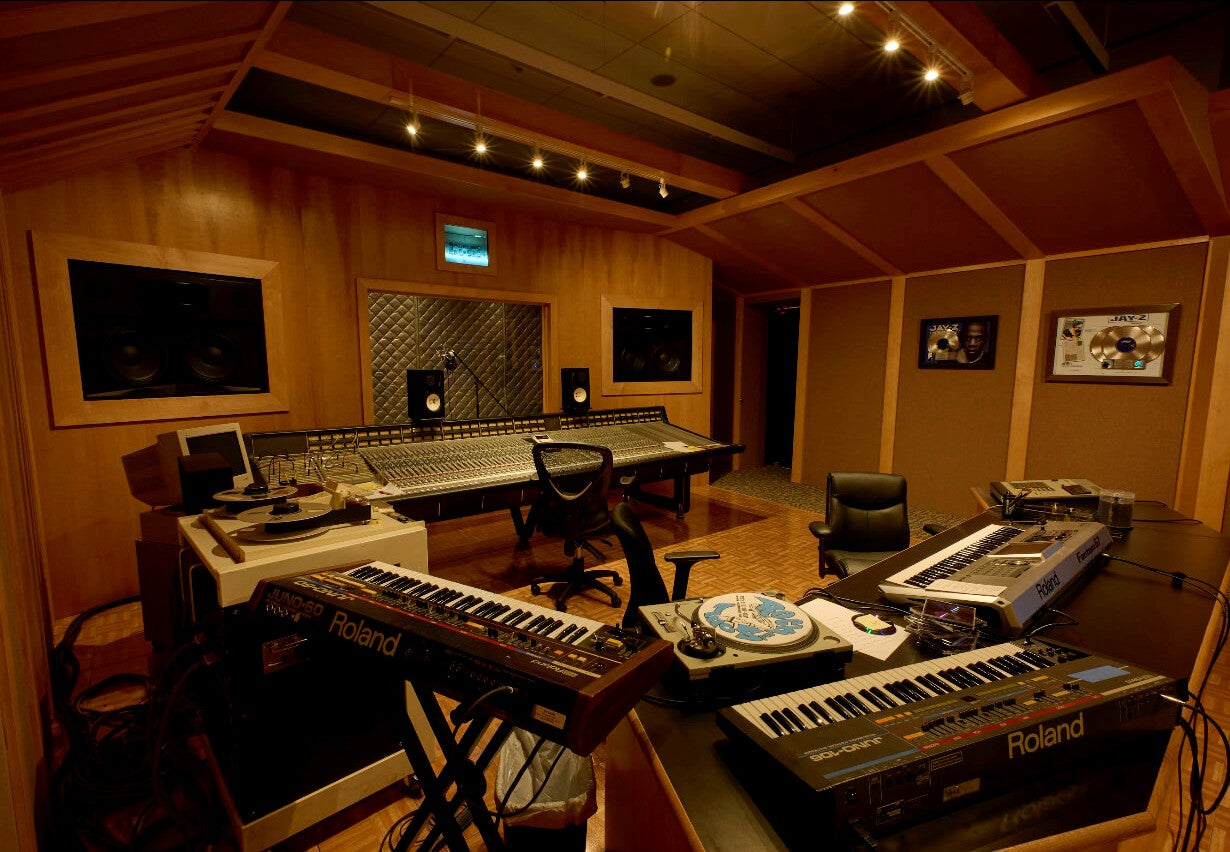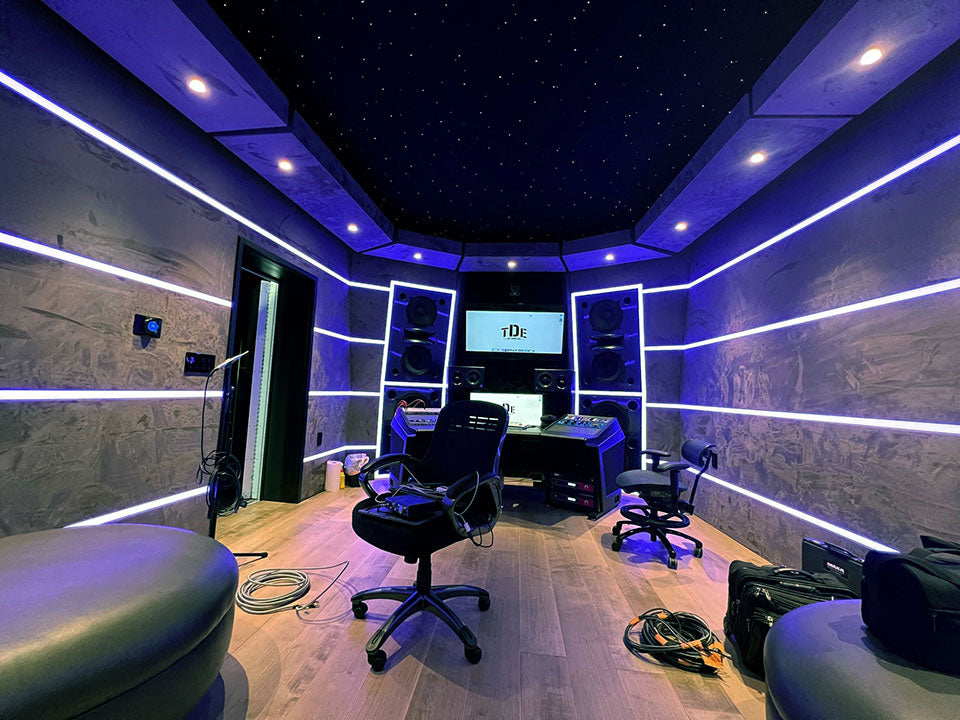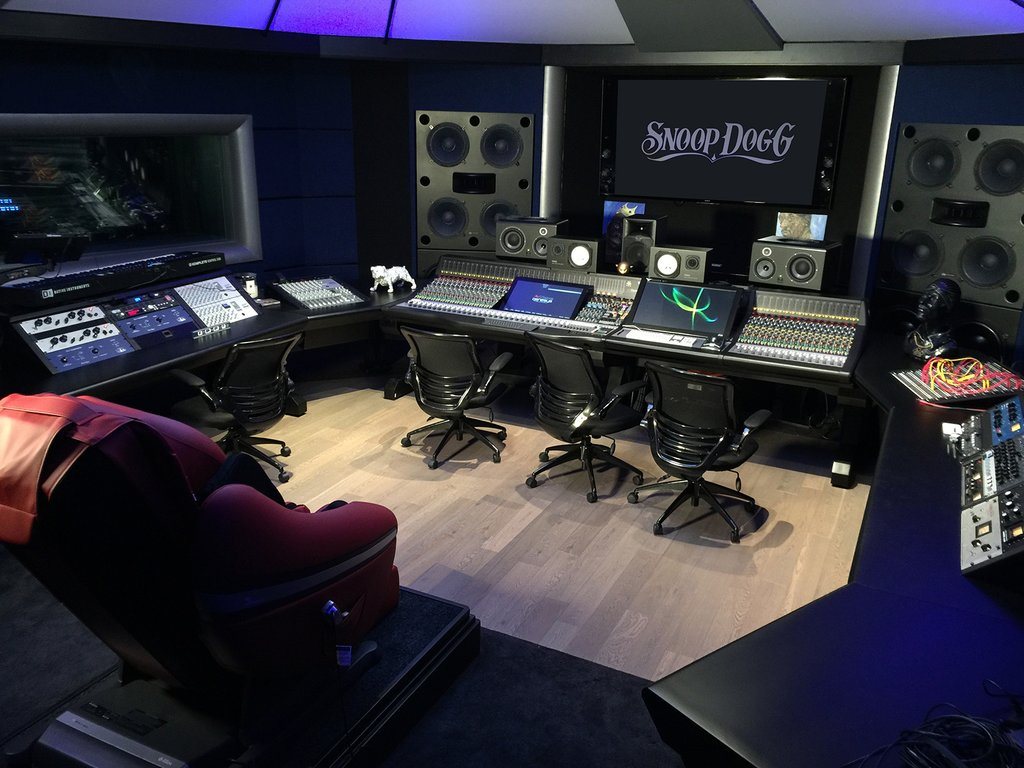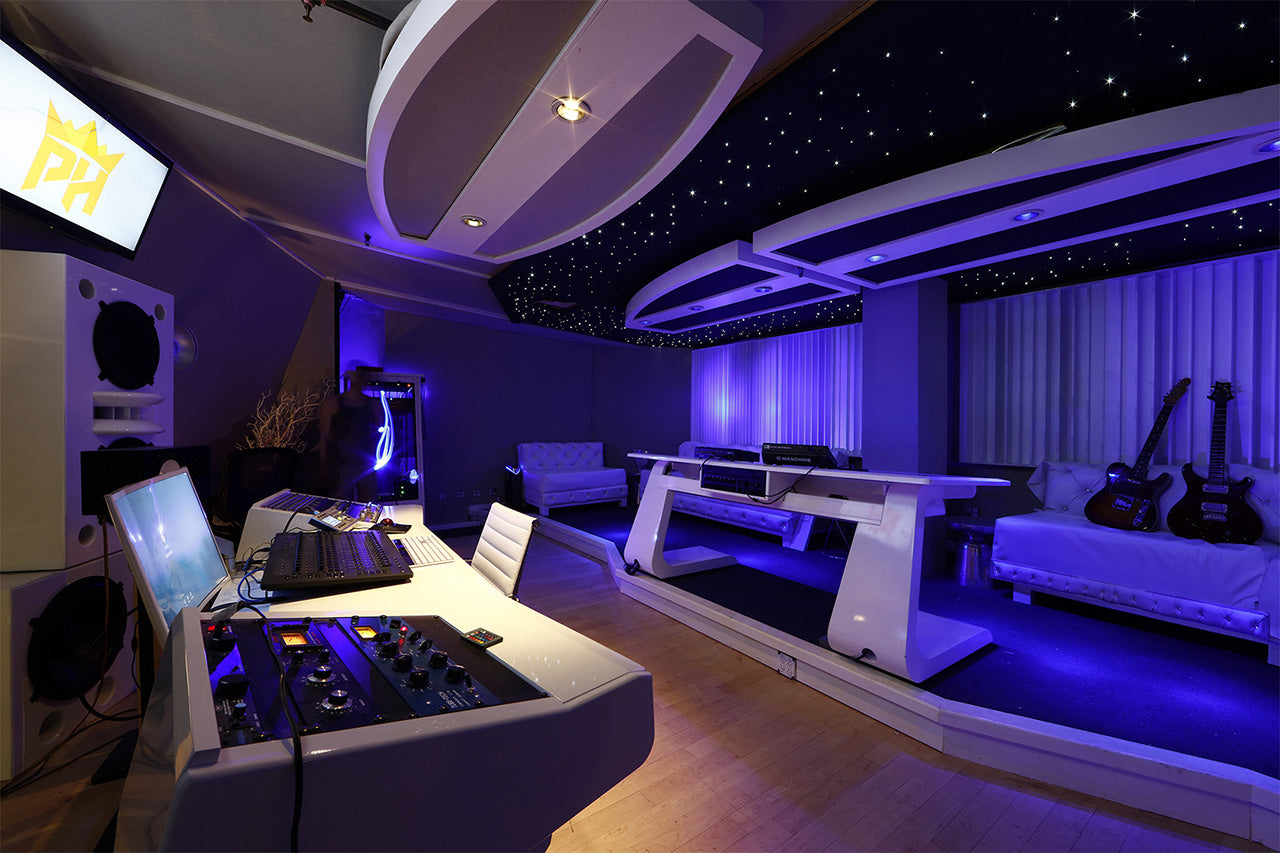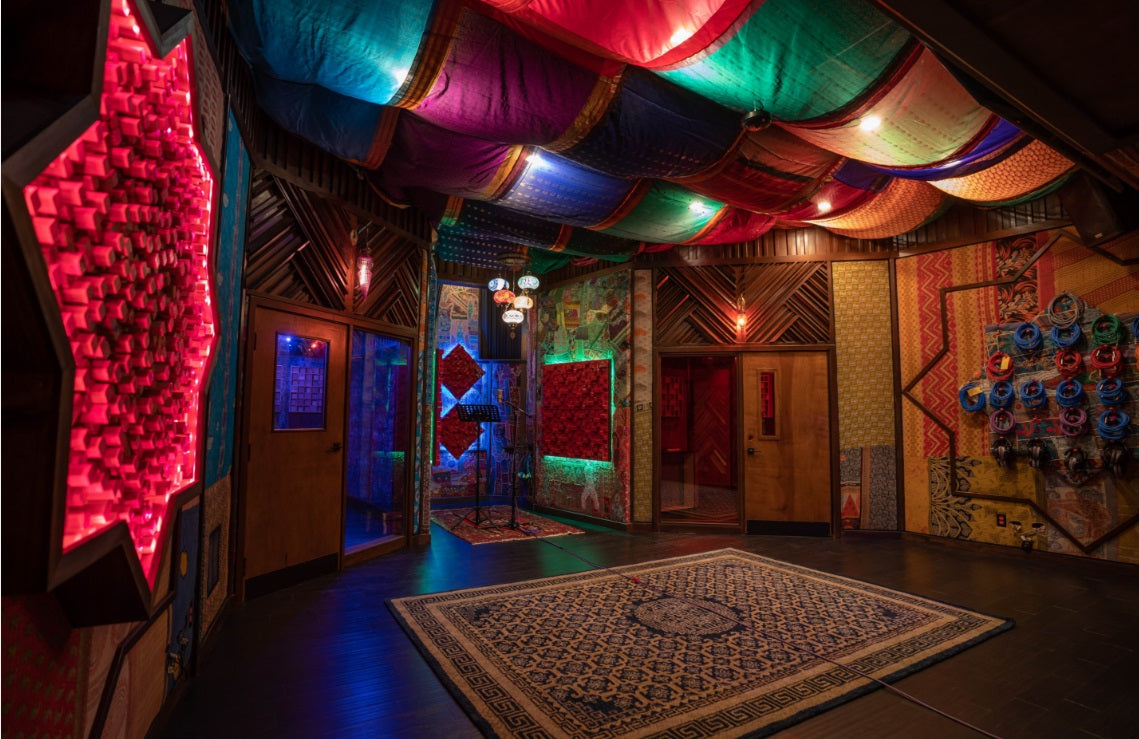
When a non-audiophile requests a loudspeaker recommendation, he often assumes that the first question you’ll ask him will be, “How much can you spend?” In fact, the first question should be: “Where will they go?” Other variables—the sort of music that’s favored, listening levels, aesthetic considerations, and, yes, cost—are often less critical than the nature of the room in which the speakers will reside. As you advise your hypothetical music-loving friend, or as you reassess your own audio journey, some familiarity with the loudspeaker offerings of Technical Audio Devices Laboratories, Inc.—TAD—could serve you well.
TAD came into being in the mid-1970s as a project of the Pioneer Electronics Corporation to develop high-performing loudspeakers for professional audio applications. The legendary American engineer Bart Locanthi of JBL fame was hired to lead the effort, and TAD’s first triumph was the TD-4001 compression driver. The TD-4001 and other TAD transducers were installed in hundreds of recording studios worldwide and were utilized for live concert sound-reinforcement, as well. In 2000, the British speaker designer Andrew Jones was brought on to establish a consumer product line; the company’s first offering to this market, the TAD-M1, was introduced in 2002. While additional speak-er models as well as preamplifiers, power amps, and digital components followed, TAD’s high-end creds were assured by the release, in 2007, of the original version of the $78,000 Reference One loudspeaker.
In terms of its North American presence, TAD drifted a bit following Jones’ departure for ELAC—there was no U.S. distributor for a few years—until the arrival of Dave Malekpour, perhaps the ideal advocate for the Japanese manufacturer in the American market. Malekpour is an accomplished guitarist who was playing three to five gigs per week until not that long ago; he’s also a self-described “speaker guy,” the founder of Pro Audio Design and a professional recording-studio designer with many A-list clients. Pro Audio Design is the manufacturer of Augspurger monitors, a pro-audio loudspeaker brand that once used TAD drivers—at least until Dave Malekpour’s needs for those parts outstripped the Japanese company’s capacity to provide them, a situation that could be changing very soon. “I think we’re breathing real fire into TAD,” Malekpour told me when we spoke at the Florida Audio Expo this past February. In a sense, a circle has been closed: An experienced pro-audio specialist has been charged with advancing TAD’s reputation with an audiophile constituency. “This relationship with TAD brings my whole life 360 degrees back around to the focus on music that has always been there,” Malekpour noted with no small amount of satisfaction.
TAD’s Evolution loudspeaker line comprises four products: the Evolution One TX considered here, two “bookshelf ”—which is to say stand-mounted—models (the Micro Evolution One and the Compact Evolution One), and the newest member of the clan, the floor-standing Evolution 2. The E1TX, the latest iteration of a product originally introduced in 2011, is a 3-way bass-reflex type, albeit one that differs fundamentally from most of the legion of loudspeakers designated as such. That’s because the tweeter and midrange are configured as a unit that TAD has named the micro-CST driver, with the 1" beryllium dome mounted coaxially within the 3.5" midrange cone. There are two 6.3" woofers with membranes constructed from layers of aramid fabric and raw fibers laminated to form a single composite material. All the drivers are manufactured from scratch by TAD. The crossover frequencies are 420Hz and 2.5kHz; the overall frequency response for the E1TX is given as 29Hz to a stratospheric 60kHz.
The speaker stands 47.8" tall on its supplied spikes, with the top surface sloping gently downward from back to front. Looked at head-on, the Evolution Ones aren’t especially imposing, just 13.8" wide and 20.2" deep. The weight of each speaker is a little over 100 pounds. The top and side edges are broadly beveled, which both mitigates the boxiness of the loudspeaker’s appearance and ameliorates diffraction issues. The aluminum outrigger base is integral to the speaker. In addition to the three cone-shaped spikes that can be sited in metal receptacles to pre-serve wood floors, TAD also provides two “overturn preventing spikes” per side. The term’s a misnomer, as they aren’t at all sharp, but they can be screwed into the bottom of the E1TX to assure that the speaker won’t be accidentally tipped over by a passing linebacker.
Perhaps the most unusual aspects of the enclosure design—and potentially the most critical in terms of the sonic benefit realized—are the slit-shaped ports on each side of the loudspeaker. Thanks to round port covers, they’re easy to mistake for side-firing woofers or passive radiators, but what’s hiding there is something that contributes substantially to the Evolution One’s superior performance in a wide range of typical domestic listening rooms (see sidebar).
Around back are two sets of binding posts, the upper and lower pairs joined by exceptionally robust jumper cables for the standard single-wire amplifier connection. I dutifully performed single-wire vs. bi-wire comparisons, and my conclusion was what it usually is: If the manufacturer provides the option to bi-wire (or bi-amp), it’s usually because it feels there’s an audible benefit to doing so. Using two pairs of T+A Speaker Hex cables, I heard improvements in detail retrieval and imaging, as well as better control of bass transients with bi-wiring. One anomaly: The T+A wires are terminated with banana plugs, and I’m used to inserting them through a hole on the backwards-facing aspect of a typical 5-way binding post.
With the E1TX, there was no hole, and it was necessary to remove the terminal’s nut completely and insert the banana into the bare post. No worries—the fit was very snug, obviously achieving good electrical contact. The most challenging part of the situation was managing not to lose the damn binding post nuts.
My listening room has been occasionally maligned online, and I’ll agree that it could be problematic. The space measures 15' x 15', suggesting inevitable issues with LF standing waves and, generally, overload of the room at high playback levels. In fact, the space works pretty well (I regularly take acoustic measurements), and there are two reasons for that. First, the ceiling is high, from ten to twelve feet, so the room’s volume is more than you’d anticipate. Second, near the front of the room, a hallway leads off to one side, serving as a kind of bass trap. That said, the decision to go for sealed-box dynamic loudspeakers—Magico M2s—as my references was motivated in part by the ability to get them positioned fairly close to the CD-lined front wall—closer than I might be able to get with a similarly sized bass-reflex design.
I started with the E1TXs 85" apart and between 21" and 25" from the wall behind them. (The range reflects that the speakers were canted in toward the listening position.) They sounded great, with spatial specificity and articulate bass. When I moved them closer to the room boundary, 18" to 21" from the front wall, there was, to my surprise, an improvement—more focus and detail, without the introduction of any bass irregularities. There were limits: When the distance to the wall was reduced to just a foot, some reduction in bass clarity was perceptible, and the speakers started to sound a bit closed-in. But to get a large, ported loudspeaker this close to the front wall in my room represents a significant design accomplishment.
Of course, beyond flexibility in placement, all the other sonic metrics that audiophiles value are still important, and the Evolution One gets high marks in all the usual categories. With vivid orchestral scores—“sonic spectaculars,” as HP used to call them—the aural presentation is plenty exciting. The Mehta/LA Philharmonic Planets (Decca), Shaw’s Firebird (Telarc), the Dorati/LSO Capriccio espagnole (Mercury), or José Serebrier’s take on Janáček’s Sinfonietta (as recorded by Keith Johnson for Reference) were all timbrally rich. On a much smaller scale, so was the Abel/Steinberg recording of the Brahms G major Violin Sonata, taped 35 years ago by the late David A. Wilson—still the finest chamber music recording I’ve ever heard. Layered depth, as artificially created for rock and pop recordings, was treasurable: Try out “Why Worry” from the beloved (if overplayed) Dire Straits album Brothers in Arms, or the title track from Roxy Music’s final studio record, Avalon.
Spatially, I heard the sort of precise imaging and soundstage continuity expected with my most demanding demo tracks; for example, on the RCO
Live recording of Shostakovich’s Symphony No. 15 with the late Bernard Haitink at the podium, voices were reproduced with all their unique characters intact. Dynamics could be startling—e.g.,
hammer hitting string on a well-made piano recording—and the E1TX loudspeakers were expert at unraveling the most complex instrumental sonorities, say the opening minutes of The Rite of Spring (choose your favorite version).
A word on amplification. Rated as having a sensitivity of 88dB and a nominal impedance of 4 ohms, the E1TXs present a fairly average load to an amplifier. With Pass Labs XA60.8 monoblocks, nothing seemed deficient with dynamically demanding source material—big band, pedal-to-the-metal rock, or symphonic power music. But providing more watts/amps from a Tidal Intra stereo amplifier got me to a whole other level of control and musical authority.
The TAD Evolution One TX is an exemplary performer all-around and, thanks to the care that went into its design, one that will work well in a wide range of real-world listening environments.
If your room isn’t palatial, but you still want sound that maintains coherency, detail, and timbral consistency as the music scales up, this could be the speaker for you. Sonically, the E1TX is competitive with similarly priced products from other top manufacturers, including some with the name of the company’s founder on the faceplate. If someone does ask who designed your loudspeaker, you can always point to the badge on the front baffle and say: “Oh, some guy named Tad.” I’m sure that Mr. Nagatani and the others on his talented team won’t mind.
TAD Engineer Toru Nagatani on the Side Ports and Coaxial Tweeter/Midrange Driver of the E1TX
At some high-end companies, there can be a cult of personality surrounding audio designers: Think of all the well-known loudspeaker, electronics, and even cable manufacturers that have adopted the name of the founder/designer as the name of the company. There was surely some of this dynamic in play at TAD during the Andrew Jones era— the restless Jones, who has since left ELAC to design speakers for MoFi Electronics, is arguably the leading “rock star” audio designer of the past decade or so. TAD wants very much for us to know that its engineering is always a group effort. A few weeks after posing some questions to Toru Nagatani, a TAD engineer who played a key role in developing the Evolution One TX, I asked him for a photo to accompany his responses. Mr. Nagatani did come through with a headshot. But, unsolicited, he also sent a second photo, one of the entire “team” with everyone labeled, even the guy who couldn’t make it to the group picture. I thought it was right to include that image, to honor the collaborative spirit that informs R&D at Technical Audio Design, Ltd.
Could you speak to how the TAD engineering team designed this speaker with real-world rooms in mind, especially in terms of bass response? A port to the rear, a port to the side, a port to both sides, no port—what went into the decision-making about that?
The sound quality characteristics and problems of front-port and rear-port systems are well known. A front port, which is located on the same side as the woofer, provides a quick attack because the timing and direction of the sound longitudinal waves are aligned to the listener. However, if the opening of the port is located in an area where the sound pressure of standing waves inside the enclosure is high, the effect of the standing waves will be strongly felt by the sound ra-diated from the port.
A rear port, on the other hand, is less affected by standing waves, but when placed in a room, its opening is closer to the wall than a front port, so its response is enhanced by boundary effects and standing waves. The volume of the bass is increased.

However, the direction of the longitudinal waves, is the opposite of that of the woofer and the timing of the radiation is not consistent because of the distance between the front woofer and rear port. While the rear port increases the volume of the bass, it tends to make the bass seem ragged and unintegrated.
The port of the E1TX was developed with the following points in mind:
- Quick attack and decay
- Bass volume independent of room size
- Reduction of the negative effects of standing waves
- No sound radiating from the port that is not in the music source
For efficient reproduction of low frequencies in a room, a port closer to the floor will provide more gain, but this position is generally the one that is most affected by the internal standing waves of the enclosure. To suppress the effects of those standing waves, it is necessary to place the port apertures away from the areas with the high sound pressure of low-order standing waves. This is the reason why the E1TX has a port on the side of the enclosure.
During the development of the E1TX, we auditioned various types of side ports, such as sealed, front-opening only, back-opening only, and all-round-opening. As a result, we finally decided to use the front and rear openings. In this condition, we were able to achieve both a sense of volume and attack in the bass range at the highest levels. In addition, this port system has features that make it tolerant and controllable for various installation locations and room sizes.
What’s the relevance of a coincident tweeter/midrange unit, in terms of a typical domestic listening space?
CST is a coaxial speaker with effective control over the phase and directionality of the drive unit across a wide frequency range. It is “coherent” because it controls the directionality of sounds across a wide range, originating at a single phase-coherent point.
Conventional multiway speakers can have flat characteristics on-axis, but not off-axis since the distances from individual speaker units to the listening position differ, leading to a deviation in response.
Coaxial speakers have speaker units on the same axis, so the distance from each unit will be the same even off-axis. In addition, CST has aligned sound sources for the tweeter and the midrange, which results in controlled directivity and improved characteristics at the crossover. The mid-range diaphragm serves to regulate the directionality pattern of the tweeter and is designed to make the directivity patterns of the tweeter and the midrange match at the crossover frequency. This prevents an excessive change in patterns between the off-axis and on-axis directivity responses.
A typical room is affected not only by direct sound from the speakers, but also by indirect sound, which consists of many reflected sounds. (In a typical room, indirect sound is louder than direct sound.) By controlling both direct and indirect sound, CST realizes a wide listening area, accurate sound image localization, and a precise soundfield.
By Andrew Quint

